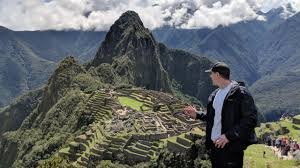
Nestled high in the Andes Mountains of Peru lies one of the world’s most iconic archaeological treasures—Machu Picchu. Often called the “Lost City of the Incas,” Machu Picchu is not just a remarkable site of ancient architecture but also a symbol of resilience, mystery, and the enduring legacy of a civilization that once thrived in the heart of South America.
A Brief History of Machu Picchu
Machu Picchu was built during the height of the Inca Empire, most likely in the mid-1400s. Historians believe it was constructed under the reign of the Incan emperor Pachacuti as a royal estate or ceremonial center. Interestingly, it was abandoned around the time of the Spanish conquest in the 16th century, though the Spanish never actually found it.
Hidden among lush greenery and steep cliffs, Machu Picchu remained relatively unknown to the outside world until American explorer Hiram Bingham brought it to international attention in 1911. While local Peruvians had always known of its existence, Bingham’s documentation introduced it to the global audience.
The Architectural Marvels
Machu Picchu’s construction is a testament to Inca engineering. The site consists of more than 200 structures, including temples, terraces, aqueducts, and residential areas—all built without the use of modern tools or mortar. The precision with which stones were cut and fitted together is truly impressive, making the entire city remarkably resistant to earthquakes.
One of the most fascinating aspects of Machu Picchu’s architecture is its integration with the natural landscape. The Incas designed the city to blend seamlessly with its surroundings. Terraces were used not only for agriculture but also to prevent landslides by stabilizing the mountain slope.
The Temple of the Sun, the Room of the Three Windows, and the Intihuatana stone are a few of the iconic structures that continue to captivate archaeologists and visitors alike. These elements suggest that Machu Picchu held spiritual significance and was possibly aligned with astronomical events.
Why Machu Picchu is a UNESCO World Heritage Site
In 1983, Machu Picchu was declared a UNESCO World Heritage Site for its cultural, historical, and architectural significance. It is considered a masterpiece of human creative genius and a symbol of the Incan civilization’s advanced understanding of architecture, agriculture, and astronomy.
The site’s remote location and preservation have helped maintain its original charm. However, increased tourism has also brought challenges. To protect this historic treasure, Peru has implemented regulations such as limiting the number of daily visitors and establishing designated walking paths.
Getting to Machu Picchu
Reaching Machu Picchu is an adventure in itself. Most travelers begin their journey in Cusco, the former capital of the Inca Empire. From there, you can take a scenic train ride to the town of Aguas Calientes, the gateway to Machu Picchu. For the more adventurous, the multi-day Inca Trail trek offers an unforgettable experience through stunning landscapes, ancient ruins, and mountain passes.
Permits are required for both the train and trail options, so advance planning is essential. Despite the effort it takes to reach, every step is worth it the moment you set eyes on the majestic ruins surrounded by mist and mountains.
Best Time to Visit
The ideal time to visit Machu Picchu is during the dry season, which runs from May to September. These months offer clearer skies and more stable weather for hiking and sightseeing. However, they also attract the most tourists, so booking in advance is recommended.
If you prefer fewer crowds, consider traveling during the shoulder months of April or October. While there might be occasional rain showers, the lush greenery and quieter atmosphere provide a unique and peaceful experience.
Cultural Significance
Machu Picchu is more than a tourist attraction—it is a cultural symbol for Peruvians and the broader Andean community. It reflects a deep connection between humans and nature, and a respect for the environment that was central to Incan beliefs. Many Peruvians view the site as a spiritual place, and it is often included in religious and cultural festivals.
Visiting Machu Picchu is a journey not only through geography but also through time. It invites you to reflect on the achievements of ancient civilizations and the wisdom they held about sustainable living, spiritual balance, and community life.
Sustainable Tourism and Preservation
While tourism plays a crucial role in Peru’s economy, it’s important to balance it with preservation. Authorities have introduced various initiatives to promote responsible tourism. These include limiting visitor numbers, encouraging eco-friendly travel, and educating tourists about the importance of conservation.
Visitors are urged to follow all guidelines, avoid littering, and respect restricted areas. Supporting local businesses, choosing certified tour operators, and minimizing environmental impact can all contribute to preserving Machu Picchu for future generations.
Why Machu Picchu Should Be on Your Travel Bucket List
There are few places on Earth that can match the awe and inspiration evoked by Machu Picchu. Whether you’re a history enthusiast, a nature lover, a spiritual seeker, or an adventurous traveler, the site offers something for everyone.
Walking through the ancient stone paths, witnessing the sunrise over the Andes, and standing among ruins that have endured for centuries—it’s an experience that leaves a lasting imprint on your soul.
From its incredible engineering to its spiritual depth and breathtaking scenery, Machu Picchu is more than just a destination. It’s a reminder of humanity’s ability to build, dream, and connect with the world in profound ways.